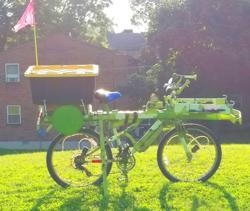So I'm working on my latest project, Platformisis, which is a game development suite written by me. Platformisis deals with the creation of 2D platform games or 2D games in general. Anyways, I'm currently in the process of creating a game called Bluejay's Quest which is a game about a bird that belongs to Mario but gets separated from him. The goal of the game is to find Mario whom the bird is a pet of.
Currently dealing with collision detection theory in the game. I recently (well, last year to be exact) learned how to do collision detection in 2D platform games. I set up a box for the object that the main character would collide with and place points on each corner of the main character. I'm using four points on each corner indented about 4 pixels in on the x-axis. So my character can move fast - like 4 pixels per frame but if I want him to move really fast, like 8 pixels per frame or even higher how do I handle this type of collision without more than one point being inside of the other sprite's bounding box? What I mean is that in order to detect a collision with a wall on the left one or both points on the left would need to be inside the wall's bounding box. However, is it possible that points on both side could be inside of the wall's box and then it would look like my character is standing by two walls. How do I deal with this issue?






